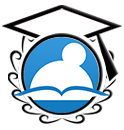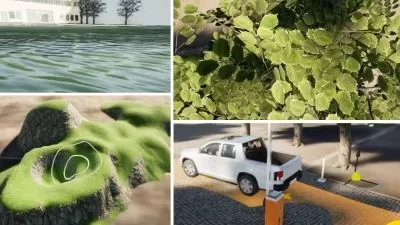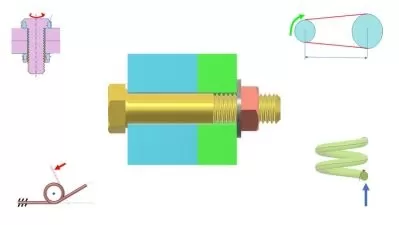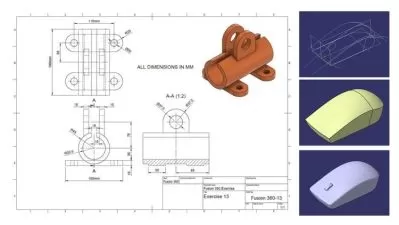CMRP Exam Preparation for Pillar 3: Equipment Reliability
Sam Zaydi
4:46:38
Description
Basic Concepts of Maintenance & Reliability [Focus: Equipment Reliability] with +140 Practice Test Questions for CMRP
What You'll Learn?
- Become ready to clear all questions from Pillar No. 3 [Equipment Reliability] in the CMRP Exam.
- Become familiar with all of the basic concepts, terminologies and jargons used in equipment reliability.
- Calculate all the different types of metrics used in industry for equipment reliability.
- Understand all the different types of techniques, approaches and methods used in industry for assessment of equipment reliability.
Who is this for?
What You Need to Know?
More details
DescriptionMaintenance and Reliability (M&R) has emerged as a field encapsulating the latest understanding of maintenance in industry. It is becoming increasingly important for professionals in the field of Maintenance and Asset Management to develop sound understanding of the concepts of Maintenance Management and Reliability Engineering in order to achieve zero equipment failures, zero production losses, zero assembly line delays and maximum profitable service life from company's assets. You need to have the most updated knowledge on the latest maintenance management philosophies and best practices to be able to become a good maintenance management professional and improve maintenance in your company.
However, just having the knowledge is not enough in order to excel in your career. What's equally important is to have a readily available proof of that knowledge. This is where certifications like the Certified Maintenance & Reliability Professional (CMRP) come in. They are accepted within industry as a badge that indicates that the person having that badge has been tested in this field. If you are a Certified Maintenance & Reliability Professional (CMRP), or hold any other similar certification in the field of M&R, it gives your word on the matter more weight than others on the table. It helps you excel in your career and open doors of new opportunities for you.
This course is designed for fulfilling both of the above objectives. It imparts you the understanding of the concepts of Maintenance & Reliability and it prepares you for certifications, most notably the CMRP.
However, Maintenance & Reliability is a vast discipline. In order to make it understandable, it is divided into sub-disciplines by any body of knowledge that aims to teach it. Just like different books on a subject teach the same subject in different ways, different institutions in the field of Maintenance & Reliability approach this discipline in different ways.
In order to ensure consistency, this course follows the Body of Knowledge developed by Society of Maintenance & Reliability Professionals (SMRP) known as the CMRP Body of Knowledge. The CMRP Body of Knowledge has divided the discipline of Maintenance & Reliability into five pillars:
Business & Management
Manufacturing Process Reliability
Equipment Reliability
Leadership & Organization
Work Management
Each of the above five pillars is a subject within itself. This course is based on teaching the 3rd Pillar: Equipment Reliability. This pillar is the most technical in nature among the five pillars. It includes knowledge of how equipment reliability is measured, tested, assessed, reported and improved. It includes calculable metrics to express different aspects of reliability of machines; methodologies of assessing the state of reliability of plant equipment; techniques for investigating reliability related issues in equipment; maintenance programs and best practices for improving reliability of plant equipment; and tools for measuring reliability growth.
This course introduces concepts of all of the above knowledge areas of Equipment Reliability in lectures having intuitive explanations and includes more than 140 practice test questions to make you ready for answering all questions related to Equipment Reliability in the CMRPÂ exam. In this way, this course works on both the aspects i.e., the understanding part as well as the certification preparedness part.
Who this course is for:
- Industry professionals preparing for the Certified Maintenance & Reliability Professional (CMRP) Exam or other similar certification exams (like the CRE or CRL).
- Engineers, technicians and maintenance professionals looking to develop basic understanding of maintenance & reliability.
Maintenance and Reliability (M&R) has emerged as a field encapsulating the latest understanding of maintenance in industry. It is becoming increasingly important for professionals in the field of Maintenance and Asset Management to develop sound understanding of the concepts of Maintenance Management and Reliability Engineering in order to achieve zero equipment failures, zero production losses, zero assembly line delays and maximum profitable service life from company's assets. You need to have the most updated knowledge on the latest maintenance management philosophies and best practices to be able to become a good maintenance management professional and improve maintenance in your company.
However, just having the knowledge is not enough in order to excel in your career. What's equally important is to have a readily available proof of that knowledge. This is where certifications like the Certified Maintenance & Reliability Professional (CMRP) come in. They are accepted within industry as a badge that indicates that the person having that badge has been tested in this field. If you are a Certified Maintenance & Reliability Professional (CMRP), or hold any other similar certification in the field of M&R, it gives your word on the matter more weight than others on the table. It helps you excel in your career and open doors of new opportunities for you.
This course is designed for fulfilling both of the above objectives. It imparts you the understanding of the concepts of Maintenance & Reliability and it prepares you for certifications, most notably the CMRP.
However, Maintenance & Reliability is a vast discipline. In order to make it understandable, it is divided into sub-disciplines by any body of knowledge that aims to teach it. Just like different books on a subject teach the same subject in different ways, different institutions in the field of Maintenance & Reliability approach this discipline in different ways.
In order to ensure consistency, this course follows the Body of Knowledge developed by Society of Maintenance & Reliability Professionals (SMRP) known as the CMRP Body of Knowledge. The CMRP Body of Knowledge has divided the discipline of Maintenance & Reliability into five pillars:
Business & Management
Manufacturing Process Reliability
Equipment Reliability
Leadership & Organization
Work Management
Each of the above five pillars is a subject within itself. This course is based on teaching the 3rd Pillar: Equipment Reliability. This pillar is the most technical in nature among the five pillars. It includes knowledge of how equipment reliability is measured, tested, assessed, reported and improved. It includes calculable metrics to express different aspects of reliability of machines; methodologies of assessing the state of reliability of plant equipment; techniques for investigating reliability related issues in equipment; maintenance programs and best practices for improving reliability of plant equipment; and tools for measuring reliability growth.
This course introduces concepts of all of the above knowledge areas of Equipment Reliability in lectures having intuitive explanations and includes more than 140 practice test questions to make you ready for answering all questions related to Equipment Reliability in the CMRPÂ exam. In this way, this course works on both the aspects i.e., the understanding part as well as the certification preparedness part.
Who this course is for:
- Industry professionals preparing for the Certified Maintenance & Reliability Professional (CMRP) Exam or other similar certification exams (like the CRE or CRL).
- Engineers, technicians and maintenance professionals looking to develop basic understanding of maintenance & reliability.
User Reviews
Rating
Sam Zaydi
Instructor's Courses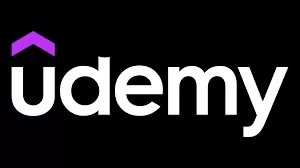
Udemy
View courses Udemy- language english
- Training sessions 61
- duration 4:46:38
- Release Date 2023/11/14
